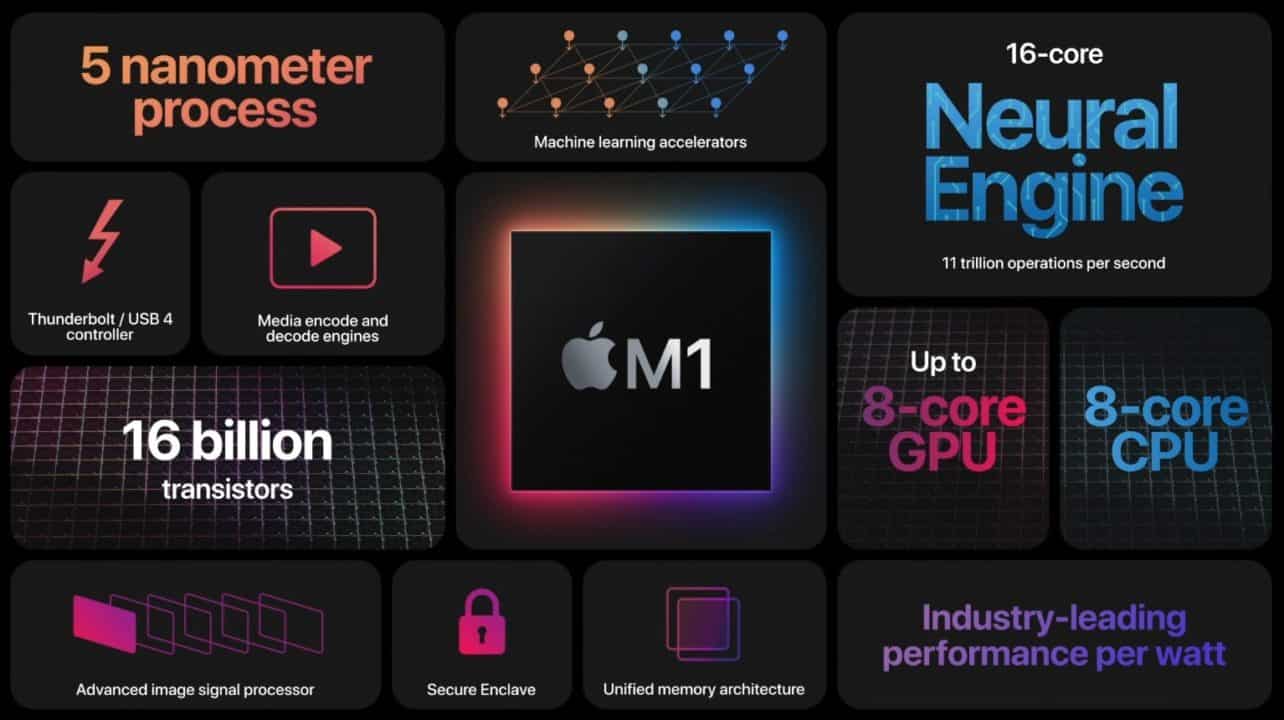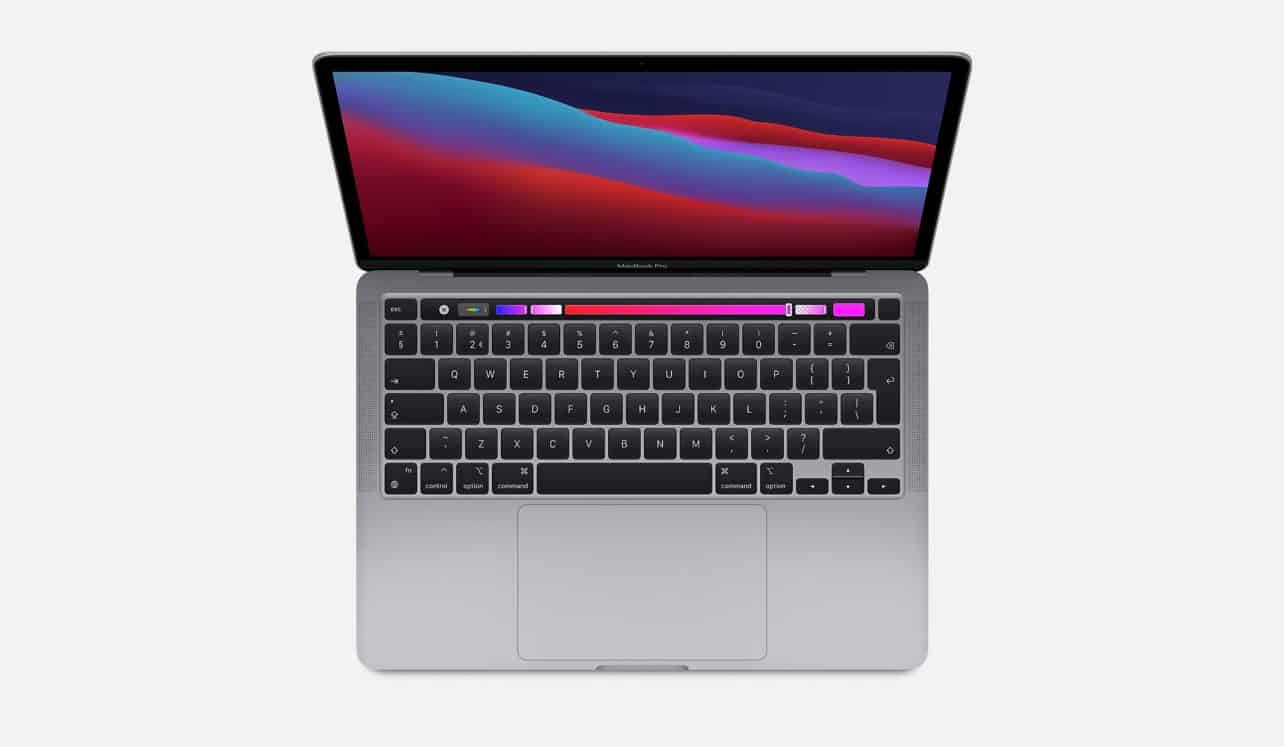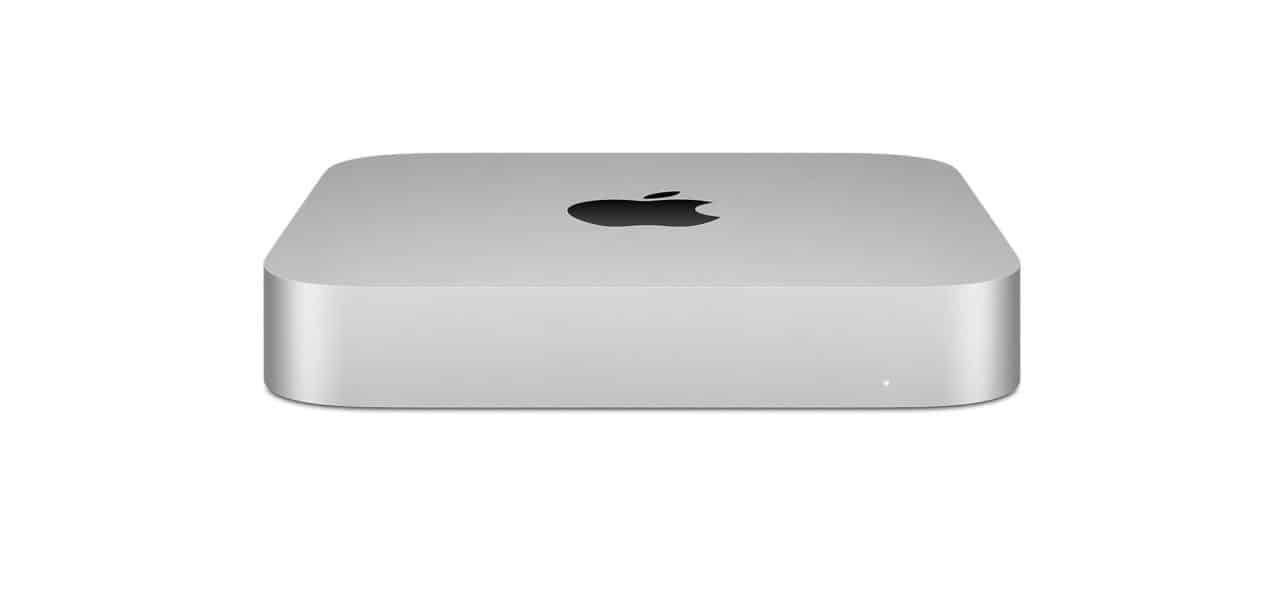Apple has announced the Apple Silicon M1. It is the first SoC the company has developed for use in laptops and desktops. Apple claims that the SoC is a lot faster and more economical than the x86 processors the company used before.
The M1-SoC builds on about ten years of experience Apple has in designing its own processors for the iPhone, iPad and other ARM hardware devices. Believing the chips are now fast enough for computers, the company announces a new MacBook Pro, MacBook Air and Mac mini.
Apple Silicon M1
The Apple Silicon M1 combines the CPU, GPU, memory and extra elements such as the i/o in one chip, as is usually done in SoCs for phones and tablets. In computers with x86 hardware, such components are still often found on separate chips.

The CPU part of the SoC consists of four fast cores and four smaller ones. Apple claims that cores are the fastest CPU cores in the world, regardless of the architecture. In addition, they are said to be a lot more economical: according to Apple, the M1 can match the Intel processors used by the company to date at a quarter of the power consumption. The four power-efficient cores are designed for simpler tasks and use only a tenth of the energy of the fast cores, Apple claims.
The GPU of the M1 consists of up to 8 cores, with a total of 128 execution units, although there is also a variant with 7 cores and an estimated 112 execution units. The company has not given much information about this, but Apple claims that the GPU is substantially faster than Intel’s counterpart.
MacBook Pro
Apple has announced two laptops and a desktop equipped with the new ARM chip. Of that trio, the MacBook Pro is the most expensive one. The entry-level versions of the popular laptop line are no longer available with Intel processors, but have been replaced by models with the Apple Silicon M1.
The MacBook Pro gets a full M1 chip with all 8 cpu-cores and 8 gpu-cores. Customers can choose between 8GB or 16GB ram and a 256GB, 512GB, 1TB or 2TB SSD. Furthermore, the laptops look identical to their Intel predecessors, with a Touch Bar, two Thunderbolt 3 ports on the left and one 3.5mm jack on the right.

The laptops cost between 1449 euros for the version with 8GB memory and 256GB storage and 2599 euros for the model with 16GB memory and a 2TB SD. Apple promises that the battery can last up to 20 hours on a full charge.
A couple of 13″ MacBook Pros will remain available with Intel processors, priced from 2129 euros for the 16GB memory and 512GB storage version. Those models can be equipped with up to 32GB ram and 4TB storage. Apple made any changes to the 16″ line yet. Those laptops will remain available with faster Intel processors and standalone GPUs.
MacBook Air
From now on, the MacBook Air is only available with the M1. This is the same SoC Apple uses in the MacBook Pro, but in this case, it is passively cooled. This makes the laptop quieter but also less able to maintain high clock speeds for an extended period of time.

The MacBook Air is available with two versions of the M1: one with all 8 GPU-cores and a version where one of the GPU-cores is disabled. Like the MacBook Pro, both variants have two Thunderbolt 3 connectors on the left and one 3.5mm jack on the right. The laptop could run for up to 18 hours on a battery charge.
The version with 7 GPU cores can be equipped with 256GB up to 2TB of storage and 8GB or 16GB RAM. The entry-level one will cost 1129 euros, and the kitted-out version will be 2279 euros. The version with 8 GPU-cores is 40 euro more expensive and is not available with a 256GB SSD. The entry-level version, with 512GB storage and 8GB memory, costs 1399 euros.
Mac mini
The Mac mini has also been updated. The small desktop computer now has essentially the same hardware as the new MacBook Pro, but obviously no screen, keyboard or battery. It does feature more connectivity: on the back you will find two Thunderbolt 3 connectors, two USB 3.1 gen2 connectors, HDMI, gigabit Ethernet, a 3.5mm jack and a C8 connector for power.

Like the MacBook Pro, the Mac mini is actively cooled and is available in 256GB to 2TB of storage capacity and 8GB or 16GB of memory. The entry-level version costs 799 euros and the most complete version is available for 1949 euros.
The Intel variant of the Mac mini will existing for the time being. It offers a 6-core processor, up to 64GB RAM, the option for a 10-gigabit Internet connection and two additional Thunderbolt 3 ports. The price is much higher: starting at 1259 euros, or up to 3454 for more features.
Software on ARM
For applications to run on the new hardware, they need to be converted. Apple has already made its new operating system, macOS Big Sur, fully ARM-capable. The company has also already converted every one of its own applications.
As an intermediate solution, Apple has developed Rosetta 2. This software emulates the x86 instruction set on an ARM computer so that programs that have not yet been converted will still run on ARM. Emulation will always have an impact on performance, but according to Apple, this impact is small enough to be compensated by the faster M1 chip. Whether this is actually the case has to be proven in practice.
Availability
To reinforce the significance of the move to ARM, Apple calls the latest version macOS 11. This is 20 years after Apple released the first version of Mac OS X. Users with Apple computers from 2013 or newer will be able to download macOS 11.0 Big Sur from November 12th.
The new MacBook Air, MacBook Pro and Mac mini can be pre-ordered now. Apple promises the laptops will be available in stores starting next week.
Tip: Review: Apple MacBook Pro 13″ 2020: small update, big difference
